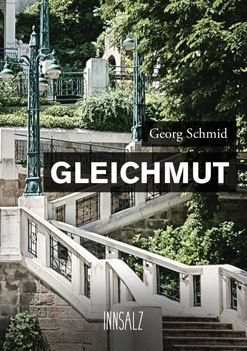Gleichmut. Novel.

The title refers to something that can be expressed by serenity, stoicism, or equanimity. The novel is set in Vienna, its principal protagonist is a psychoanalyst, Ernst Laehrte. Yet, the narrative threads go far beyond him. There is a multitude of themes and motives, reaching from political meditations to a disquieting espionage affaire.
At the basis of the novel is Stephen Hawking’s assumption that there could be a plurality of universes. This novel propounds that, in a parallel universe, Old Austria could have become the Confoederatio Austriaca, based on multicultural, multiethnic and plurilingual principles. There would have been no WW I, hence no WW II, and no Shoah. The dominance of the centralized nation state would have been avoided.
The doctor is deeply implanted in his family which is running an economic consultancy and thus trying to figure out what might happen in the socio-economic arena in the future; in his medical practice he attempts to do something similar for the past by trying to fathom what the origins of his patients‘ ailments could be. The entire family strongly believes in prosperity as a necessary basis for progress and assumes that mental illnesses, one way or another, are caused by social factors.
Vienna, the major backdrop of the novel, is subtly different from the actual city of that name; much of the narrative tension is built on the puzzle what actually is different between the two. There are several other components, from musical performances by the family via allusions to the US road movie, dining and wining (the epiculrean Viennese!), but also discussions of angst. But the leading motive is Carpe diem. However, to achieve that vital principle, constant input and effort is required. At any rate, it can be said "a (somehwat) better world could be possible."

